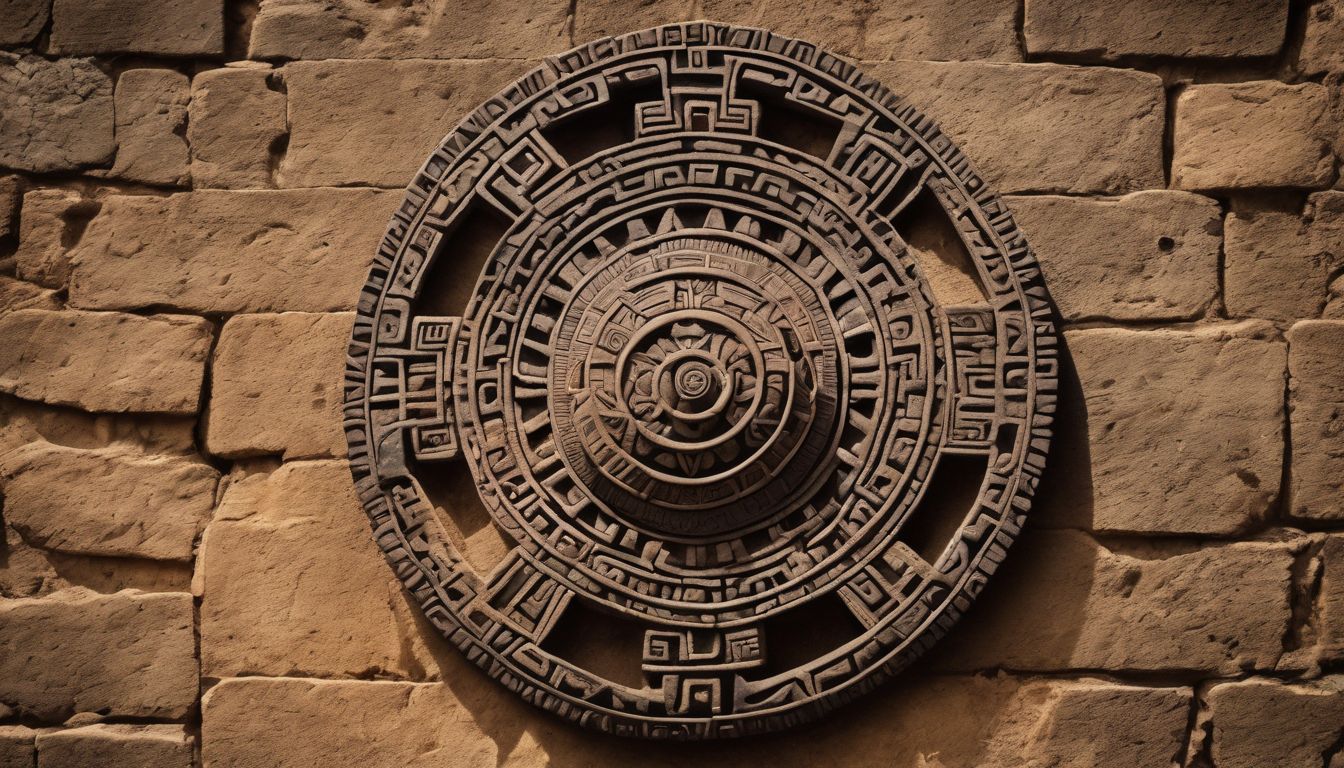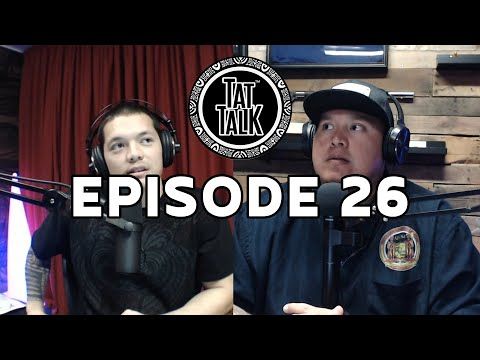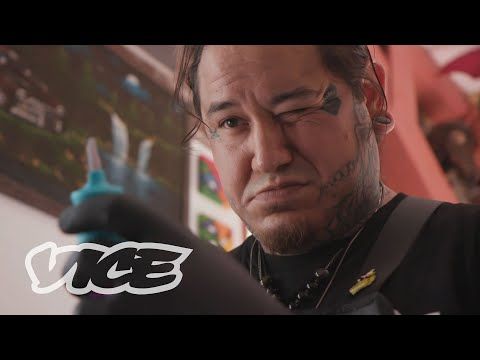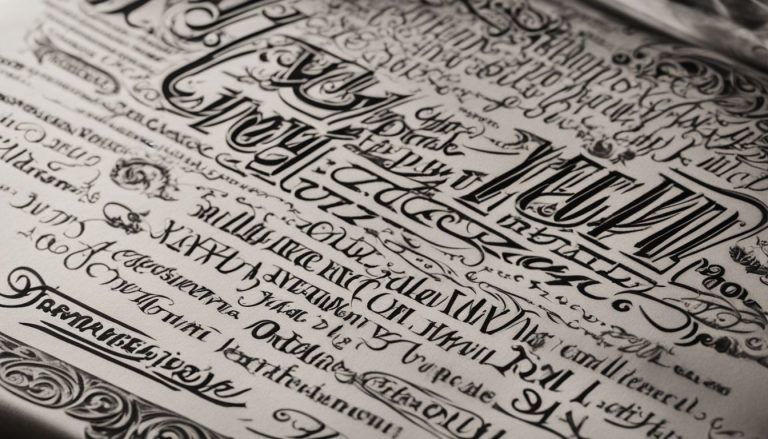Exploring the Symbolism and History of Aztec Tattoos
Are you interested in the history and symbolism of Aztec tattoos? Did you know that each tattoo has a unique story to tell? In this blog post, we will explore the significance of Aztec tattoos and how they can convey personal identity. Join us as we unravel the rich cultural heritage behind these ancient body art forms!
Key Takeaways
- Aztec tattoos originate from the ancient Mesoamerican civilization and hold significant meaning, often representing the wearer’s status, achievements, and spiritual beliefs.
- Traditional Aztec tattoo symbols include gods and deities, powerful animals like eagles and jaguars, as well as geometric patterns that depict important cultural themes such as time and nature.
- Popular placement for Aztec tattoos includes upper arms, back, chest, calf, and forearm; these locations allow for displaying intricate designs that symbolize personal stories or cultural heritage.
- Modern interpretations of Aztec tattoos blend traditional design with contemporary styles such as neo-traditional vibrant colors or black-and-gray shading techniques to create meaningful body art.
- Despite modern adaptations in technique and style, the symbolism of Aztec tattoos remains deeply connected to historical significance – honoring an individual’s lineage while acting as a form of self-expression.
Brief overview of Aztec tattoos
Aztec tattoos are a powerful form of body art deeply rooted in the rich history of Mesoamerican civilization. These intricate designs often incorporate complex geometric patterns and indigenous artwork, celebrating themes of life, death, and spirituality.
Warriors inked their skin with symbols representing courage and warrior status, while other designs might depict the Aztec calendar, signaling an understanding of time and cosmic cycles.
Eagles soaring across skin speak to freedom and strength while skulls honor the cycle between life and death. The sun’s fiery rays symbolize creation, tying individuals to the forces that shape existence itself.
Every tattoo carries profound personal significance—each line tells part of a person’s story or lineage within its traditional motifs. As we delve into each aspect of these ancient symbols, we’ll uncover how they continue to influence modern tattoo culture today under “History and Cultural Significance of Aztec Tattoos”.
History and Cultural Significance of Aztec Tattoos
Aztec tattoos have a rich history that dates back to ancient Mesoamerican civilizations. They held great cultural significance, symbolizing the wearer’s status, achievements, and connection to spiritual beliefs.
Symbols like gods, animals, and geometric patterns conveyed important meanings in Aztec culture.
Origins of Aztec tattoos
Tattoos in Aztec culture were more than just body decorations; they held profound meanings and conveyed a person’s lineage, accomplishments, and social status. Warriors often received tattoos as symbols of their bravery and to mark achievements in battle.
The intricate designs could depict mythical creatures or gods, representing protection and power for those who wore them on their skin.
Priests also bore specific tattoo patterns signifying their connection to the divine. They adorned themselves with symbols that reflected their religious devotion and roles within the spiritual world.
Tattoos served not only as personal amulets but also as cultural narratives, preserving stories of deities, cosmology, and tribal identity through detailed artwork etched into the human canvas.
Importance in Aztec culture
Aztec tattoos held profound cultural significance, serving as a visual language to convey an individual’s lineage and personal story. These tattoos were also deeply intertwined with Aztec spirituality, symbolizing the connection between the physical and spiritual realms.
The symbols and designs used in Aztec tattoos reflected the rich mythology, beliefs, and rituals of the Aztec culture, representing themes such as resilience, strength, life cycles, time, nature elements like animals and the sun.
Furthermore, these intricate body art forms played a vital role in reflecting social status and identity within Aztec society.
The importance of Aztec tattoos extended beyond mere aesthetic expression; they served as a form of storytelling through artistic representations that honored ancestral traditions and conveyed historical narratives.
Symbols and meanings
Symbols and meanings in Aztec tattoos are deeply rooted in Mesoamerican culture, reflecting the Aztecs’ rich history and spiritual beliefs. Each symbol holds profound significance, such as the warrior skull representing resilience and the cycle of life and death.
Geometric patterns in tribal designs convey complex symbolism, often depicting concepts like time and natural elements. Animals like eagles symbolize strength, while the sun or pyramids represent divine power.
The intricate Aztec calendar is a popular motif, embodying the concept of cycles and cosmic order. These symbols carry timeless meaning and continue to inspire tattoo enthusiasts seeking to honor ancient traditions.
Popular Aztec Tattoo Designs
Depictions of gods and deities, geometric patterns, and animals are some of the most popular designs in Aztec tattoos. If you want to explore the rich history and symbolism behind these iconic tattoo designs, keep reading!
Depictions of gods and deities
Aztec tattoos often feature depictions of gods and deities, serving as powerful symbols of spirituality and belief. These designs can include representations of major Aztec gods such as Huitzilopochtli, the god of sun and war, or Quetzalcoatl, the feathered serpent deity associated with creation and wisdom.
Additionally, Aztec goddesses like Coatlicue, the mother of all gods, are also commonly depicted in tattoos. Each deity holds specific meanings and significance within Aztec mythology, adding depth and symbolism to the tattoo designs.
The portrayal of these gods and deities in Aztec tattoos reflects the enduring influence of ancient Mesoamerican beliefs on contemporary art forms. The intricate details and rich symbolism found in these depictions offer a glimpse into the profound spiritual connections that continue to inspire modern interpretations of Aztec tattoos.
Geometric patterns and designs
Alongside depictions of gods and deities, Aztec tattoos often incorporate intricate geometric patterns and designs to convey powerful symbolism. These geometric motifs are characterized by their precision and complexity, representing concepts such as unity, balance, and the interconnectedness of life.
The use of circles, squares, triangles, and other shapes in Aztec tattoo designs reflects the Mesoamerican belief in cosmic order and harmonious existence. These geometric patterns not only add visual interest to the tattoos but also hold deep cultural significance for those embracing this ancient art form.
Intricate geometrical elements such as concentric circles or repetitive angular shapes are integral parts of traditional Aztec art that continue to inspire modern tattoo designs. Geometric patterns serve as visual storytelling tools within Aztec tattoos, conveying profound meanings through their symmetrical arrangements and precise forms.
Animals in Aztec art
Amidst the intricate geometric patterns and designs, animals played a significant role in Aztec art and tattoo culture. The Aztecs revered animals for their symbolic attributes, often incorporating them into their artwork to represent various virtues and beliefs.
Eagles, for instance, symbolized power, courage, and strength in Aztec society – traits highly esteemed by warriors who aimed to embody these qualities through tattoos depicting eagles.
Additionally, the jaguar held great importance as a symbol of prowess and agility among warriors.
Furthermore, Aztec art frequently featured depictions of snakes that represented divine wisdom and transformation. These animal motifs were not only visually striking but also carried profound spiritual significance within the Aztec culture.
Placement and Style of Aztec Tattoos
Aztec tattoos are commonly found on the upper arm, back, and chest. They often feature bold lines and intricate geometric patterns inspired by traditional Mesoamerican art.
Recommended body parts for Aztec tattoos
The upper arm and shoulder are ideal body parts for Aztec tattoos due to their expansive canvas, allowing for intricate designs like the traditional Aztec calendar or detailed geometric patterns.
The back is also a popular choice, providing ample space for larger, more elaborate designs such as depictions of gods or scenes from ancient Mesoamerican history. Another favored location is the calf, offering a visible yet versatile area that can accommodate various symbols like animals and elements of nature present in Aztec art.
The chest serves as an excellent spot for bold warrior symbolism or other powerful imagery, while the forearm provides a prominent placement for smaller, meaningful motifs such as glyphs or significant dates in Aztec culture.
Different tattoo styles and techniques
Aztec tattoos can be achieved through different styles and techniques. Some of the popular tattoo styles for Aztec designs include neo-traditional, black and gray, and minimalistic approaches.
Neo-traditional Aztec tattoos incorporate vibrant colors and bold lines while staying true to traditional Aztec imagery. Black and gray Aztec tattoos rely on shading to create depth and dimension, often emphasizing the intricate details of symbols or patterns.
Minimalistic Aztec designs focus on simplicity, using clean lines and subtle elements to convey cultural significance without overwhelming the design.
Tattoo artists use various techniques such as linework, dotwork, stippling, or fine line work to bring out the intricacy in Aztec tattoo designs. These techniques are carefully chosen depending on the specific symbolism or meaning that needs to be highlighted in the tattoo.
Modern Interpretations and Trends
– Neo-traditional Aztec tattoos blend traditional designs with modern techniques, creating vibrant and intricate pieces of body art. Black and gray Aztec tattoos offer a more understated and classic look, while minimalistic Aztec designs focus on simplicity and clean lines to convey powerful symbolism.
Neo-traditional Aztec tattoos
The neo-traditional Aztec tattoos take inspiration from traditional Aztec designs, infusing them with modern tattooing techniques and styles. These tattoos often feature bold lines, vibrant colors, and a mix of contemporary elements while staying true to the ancient symbolism and cultural significance of Aztec art.
Neo-traditional Aztec tattoos have become popular for their fusion of old and new, creating unique and visually striking designs that pay homage to Mesoamerican heritage while appealing to the modern aesthetic.
These contemporary interpretations breathe new life into ancient symbols, offering individuals the opportunity to connect with their Latin American heritage in a fresh and expressive way through body art.
Embracing traditional motifs within a modern context allows for a reimagining of timeless symbols, ensuring that Aztec tattoo traditions continue to evolve in today’s diverse tattoo culture.
Neo-traditional Aztec tattoos bridge the gap between history and contemporary expression, creating meaningful connections across generations.
Black and gray Aztec tattoos
Black and gray Aztec tattoos are a popular trend that combines ancient symbolism with modern tattoo techniques. The monochromatic color scheme adds an air of mystery and timelessness to the intricate designs, accentuating the rich cultural significance of Aztec symbols.
This style often emphasizes the detailed geometric patterns and figures found in traditional Mesoamerican art, creating a striking visual impact. Utilizing shades of black and gray enhances the depth and intricacy of the symbols, making them stand out on various skin tones, while also allowing for subtle variations in texture and shading.
In black and gray Aztec tattoos, elements like gods, warriors, animals such as eagles or jaguars, pyramids, suns, or other celestial symbols come to life with dramatic contrast. These designs often evoke strength and resilience through powerful imagery embedded in each stroke of ink.
Minimalistic Aztec designs
Minimalistic Aztec designs focus on simplicity and clean lines, often featuring smaller motifs with understated details. This style emphasizes the essential symbolism of Aztec art, incorporating key elements such as geometric shapes and symbols from Aztec mythology.
While traditional Aztec designs may be intricate and elaborate, minimalistic interpretations offer a more contemporary aesthetic while still retaining the cultural significance and historical context associated with this ancient Mesoamerican culture.
In these modern tattoo renditions, artists skillfully capture the essence of meaningful Aztec symbols using fewer details and shading techniques. Some popular minimalist motifs include simplified depictions of gods or animals, geometric patterns like circles or triangles, and representations of natural elements such as the sun or water.
Conclusion
Aztec tattoos continue to hold significant cultural symbolism and appeal in modern times. With their roots deeply embedded in Mesoamerican history, these intricate designs are a powerful representation of individual identity and heritage.
The enduring popularity of Aztec tattoos underscores their timeless significance in the world of body art and personal expression.
The enduring appeal of Aztec tattoos
Aztec tattoos continue to captivate people with their rich symbolism and cultural significance. The timeless allure of these ancient designs lies in their ability to convey profound meanings, from representing resilience in the face of adversity to symbolizing the cycle of existence.
Through intricate geometric patterns and depictions of deities, Aztec tattoos offer a unique way for individuals to express their personal stories and honor Mesoamerican heritage. With roots deeply embedded in Mexican history and Pre-Columbian art, Aztec tattoos have evolved into modern interpretations while preserving their ritual significance and powerful symbolism.
The enduring fascination with Aztec tattoos also stems from their versatility in design and placement. Whether it’s the depiction of warriors or animals like eagles, each tattoo tells a captivating story that resonates with individual identity.
Symbolism and cultural significance in modern times.
In modern times, Aztec tattoos continue to hold deep cultural significance and symbolism. These tattoos have become a way for individuals to connect with their heritage and express personal narratives through ancient Mesoamerican symbols.
The integration of traditional Aztec designs into modern tattoo art serves as a powerful representation of resilience, strength, and identity. Additionally, the incorporation of contemporary elements and styles has revitalized the timeless symbolism of Aztec tattoos, making them a popular choice for those seeking meaningful body art.
The enduring appeal of Aztec tattoos lies in their ability to transcend time and convey profound meaning in today’s society. As people seek deeper connections with history and traditions, these ancient symbols offer a unique way to honor cultural heritage while embracing personal empowerment through modern interpretations.
FAQs
1. What is the history behind Aztec tattoos?
Aztec tattoos have a rich history that comes from the ancient Aztec culture, where they used tribal tattoo designs full of Mesoamerican symbolism for various reasons including to show rank and achievements.
2. Why do people get Aztec tattoo designs?
People choose Aztec tattoo designs for their symbolic meanings and to connect with the powerful imagery of PreColumbian art. Many find inspiration in the symbols of strength, like those associated with Aztec warriors.
3. What are some common symbols found in Aztec tattoos?
Common symbols in Azztecoctatoos include animals like eagles and jaguars, gods like Quetzalcoatl, and shapes that represent elements of nature or celestial bodies – each carrying its own distinct meaning within Mesoamerican symbolism.
4. Where on my body should I place an Aztece tatooooo?
Aztech tatto placement can vary but is often chosen based on personal significance or based on traditional beliefs about where these tattoos had been placed by members of the ancient civilization to maximize their potency and meaning.
5. Can anyone get an Asteca tiger tattoo or should it be culturally sensitive?
While anyone can draw inspiration from Asekteh tatto art,, it’s important to understand and respect the profound historical significance these designs hold within Atack cultures as well as ensuring they’re crafted respectfully when becoming part of your own body art.










